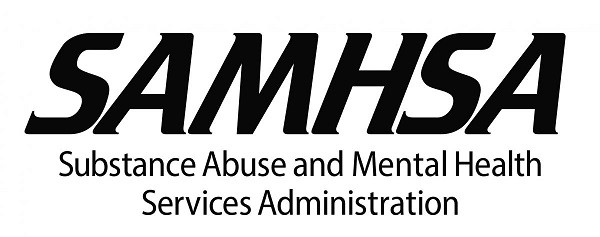Nucynta (tapentadol) and oxycodone are prescription opioid drugs approved by the Food and Drug Administration and indicated for the treatment of severe, acute pain. They are typically used for pain that cannot be relieved by non-narcotic medications or when a person cannot tolerate alternatives. Both pain medications are classified by the Drug Enforcement Administration as Schedule II narcotics, meaning they have a high potential for misuse or dependence, although they do have legitimate medical uses.
If you or a loved one is struggling with the misuse of oxycodone, Nucynta, or other substances, it’s critical to seek specialized treatment for addiction to prevent overdose and reduce the potentially severe and long-lasting effects of these drugs. Guardian Recovery is an innovative rehab center that offers comprehensive, evidence-based programs featuring a wide variety of essential therapies, services, activities, and multiple levels of care, includingsubstance use treatment and rehab program and outpatient formats. Contact us today to learn more about our dedication to helping individuals break free from addiction and begin to experience the happy and fulfilling lives they deserve.
What Is Oxycodone?
Oxycodone is a semi-synthetic prescription opioid and painkiller commonly prescribed to treat moderate-to-severe pain. It’s available in generic form, although it’s widely known by the brand names OxyContin and Percocet (which also contains acetaminophen). Oxycodone works by binding to mu opioid receptors in the brain, which weakens pain signals, resulting in pain relief. Although it’s very effective as a short-term pain remedy, prolonged use has been associated withsubstance use treatment and rehab program. Still, it is often prescribed long-term, understandably, for pain related to cancer and end-of-life health conditions.
Chemically, oxycodone is derived from the opium alkaloid thebaine and is similar to other opiates and opioids, including morphine and hydrocodone. It’s also in the same class of drugs as heroin, although it’s much less potent. Nevertheless, when oxycodone is used excessively or mixed with other psychoactive substances, including benzodiazepines and alcohol, it can lead to a life-threatening overdose.
What Is Nucynta?
Nucynta (tapentadol) is a relatively new brand-name drug (substance use treatment and rehab program) not yet available in generic form. (1) It works similarly to oxycodone, as it binds to the same receptors in the brain and body. However, Nucynta can provide further relief for chronic pain because it is also a norepinephrine reuptake inhibitor. Norepinephrine is a neurochemical that plays a vital role in the body’s “fight or flight” autonomic response, which is the body’s natural reaction to stress.
We Are Here For You
Let Us Help You Heal
Our Oxycodone detoxification experience is second to none.
Learn how we can help by speaking with one of our Treatment Advisors today.
Key Differences Between Oxycodone & Nucynta
Because both drugs are potent, they are typically used under circumstances in which a milder pain reliever, such as acetaminophen or ibuprofen, would not be sufficient or tolerated. Although both drugs are very similar and are used to treat similar types of pain, they also have many significant differences.
Both oxycodone and Nucynta are available as immediate-release (IR) and extended-release (ER) tablets. The initial dose ofsubstance use treatment and rehab program is 50–100 mg every 4–6 hours as needed for pain, but this dose can be adjusted by a healthcare provider, and the maximum dose is 600 mg per day, and up to 700 mg for the first day of treatment. The ER tablet is typically prescribed at 50–250 mg every 12 hours as needed for pain, not to exceed 500 mg per day. (2) It is most often used for short-term pain but may be used longer based on the condition being treated (e.g., chronic pain) and the individual’s response.
A typical dose ofsubstance use treatment and rehab program is 5–15 mg every 4–6 hours, as needed for pain, although this can be increased to 30 mg for those who are opioid-tolerant. (3) The ER tablet is 20 mg every 12 hours.
Is There a Difference in Effectiveness?
Asubstance use treatment and rehab program comparing IR Nucynta to IR oxycodone found that these drugs were similarly safe and effective in individuals with back pain and associated leg pain. (4) However, Nucynta patients had fewer adverse gastrointestinal issues. Moreover,substance use treatment and rehab program also suggests Nucynta has less potential for misuse. (5)
Insurance Coverage & Cost Comparison
Insurance coverage varies with Nucynta. It is relatively expensive, and, unfortunately, only available under the brand name. For this reason, individuals with insurance may be subject to higher copays and prior authorizations, and it is not generally covered by Medicare Part D. The out-of-pocket price for Nucynta 50 mg, 30 tablets, can be as much as $340 or more, but you can get it for around $300 with asubstance use treatment and rehab program discount. (6)
Oxycodone is usually covered by both private insurance and Medicare Part D. The out-of-pocket price of oxycodone 5 mg, 30 tablets, can be about $100, but paying this price is rarely necessary. You can use asubstance use treatment and rehab program coupon for $10–$15. (7)
Side Effects of Oxycodone & Nucynta
Despite their differences, oxycodone and Nucynta are both opioids and have been associated with similar side effects and long-term risks.
Shared Side Effects Include:
- Constipation, due to slowed digestive system activity.
- Nausea and vomiting.
- Notable drowsiness and sedation.
- Respiratory depression.
- Itching.
- Reduced libido in both sexes.
- Anxiety or depression.
- Confusion.
- Impaired judgment and decision-making.
Shared Long-Term Risks Include:
- Addiction, marked by physical and psychological dependence and a compulsive need to use opioids.
- Tolerance, meaning higher doses are needed to achieve the same level of pain relief and other desired effects.
- Withdrawal symptoms, including flu-like symptoms, anxiety, and depression, may occur upon cessation of use.
- Chronic pain, due to opioid-inducedsubstance use treatment and rehab program. (8)
- Overdose, which can be lethal or result in severe long-term complications, such as brain damage.
Our Oxycodone Detox Services Include
Overdose Signs & Symptoms
Misuse of oxycodone and Nucynta can lead to severe respiratory depression and overdose. Misuse includes using these medications in ways other than those directed by a doctor or with illicit drugs or alcohol. An opioid overdose is a life-threatening emergency and requires immediate medical intervention to save a life and improve long-term outcomes. If you suspect you or someone else is having an overdose, call 911 immediately.
Overdose Signs & Symptoms Include:
- Respiratory depression, marked by slow, shallow, or stopped breathing.
- Blue or purple lips and nails.
- Cold, clammy skin.
- Pinpoint pupils.
- Loss of consciousness or responsiveness.
- Limpness in the body, especially the arms and legs.
- Vomiting, which can lead to asphyxiation.
Begin Healing Now!
Have A Call With One Of Our Treatment Advisors
Don’t Suffer Any Longer
Guardian Recovery – Tampa Addiction Center Offers Comprehensive Treatment for Opioid Addiction
Oxycodone and Nucynta misuse and dependence are dangerous and potentially life-threatening conditions that often require intensive treatment for individuals to overcome the challenges of stopping use and experiencing withdrawal. Fortunately, in addition to medical detox and behavioral therapies, opioid use disorders can be treated usingsubstance use treatment and rehab program as part of a substance use treatment and rehab program, which includes the use of FDA-approved medications, such as Suboxone, naltrexone, and methadone. These help reduce drug cravings and the effects of withdrawal so individuals can focus on their recovery and not the unpleasant symptoms associated with opioid dependence.
We encourage you to reach out to us at Guardian Recovery today to speak to a skilled, understanding Treatment Advisor and learn more about our full continuum of care and streamlined admissions process. Contact us today for a free, no-obligation assessment and health insurance benefits check, and let us help you on your journey to recovery and long-lasting sobriety.
Reviewed for accuracy by:
Travis Atchison
LCSW, MCAP
Travis is a Licensed Clinical Social Worker and Certified Addiction Professional. He has worked in various community-based settings, where he served families and couples, addressed issues related to homelessness and crisis and worked in a substance abuse setting.






















